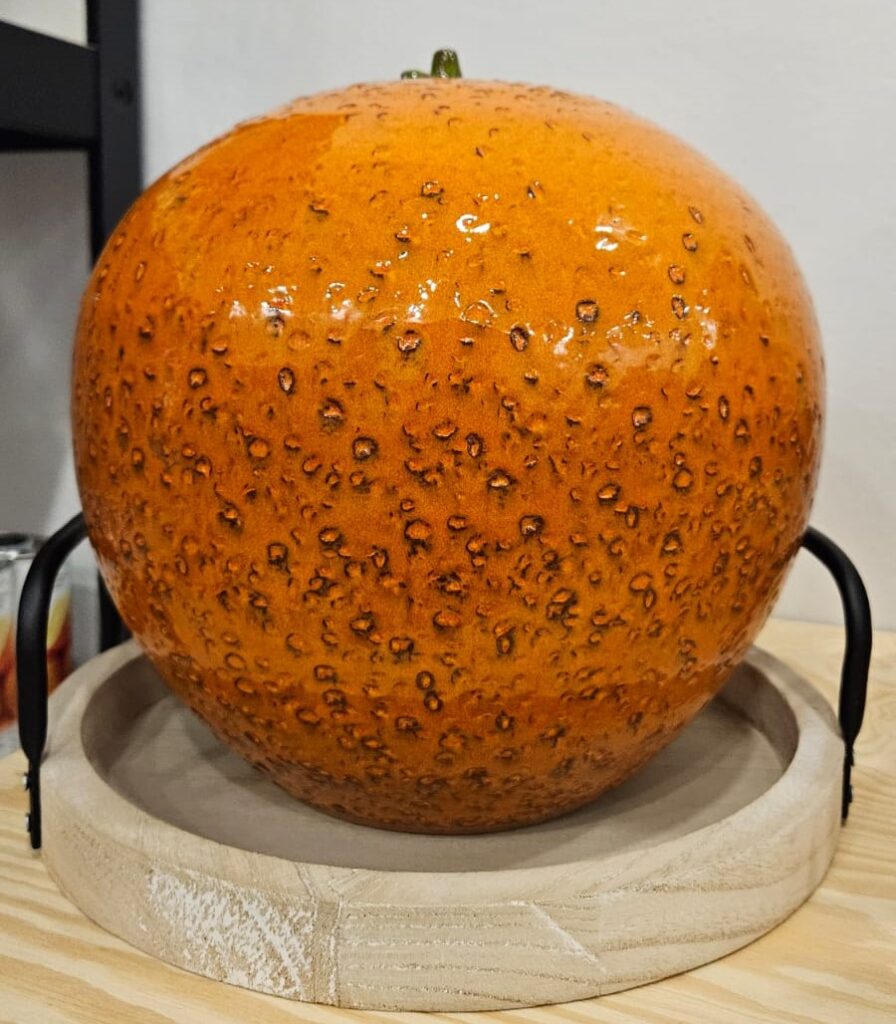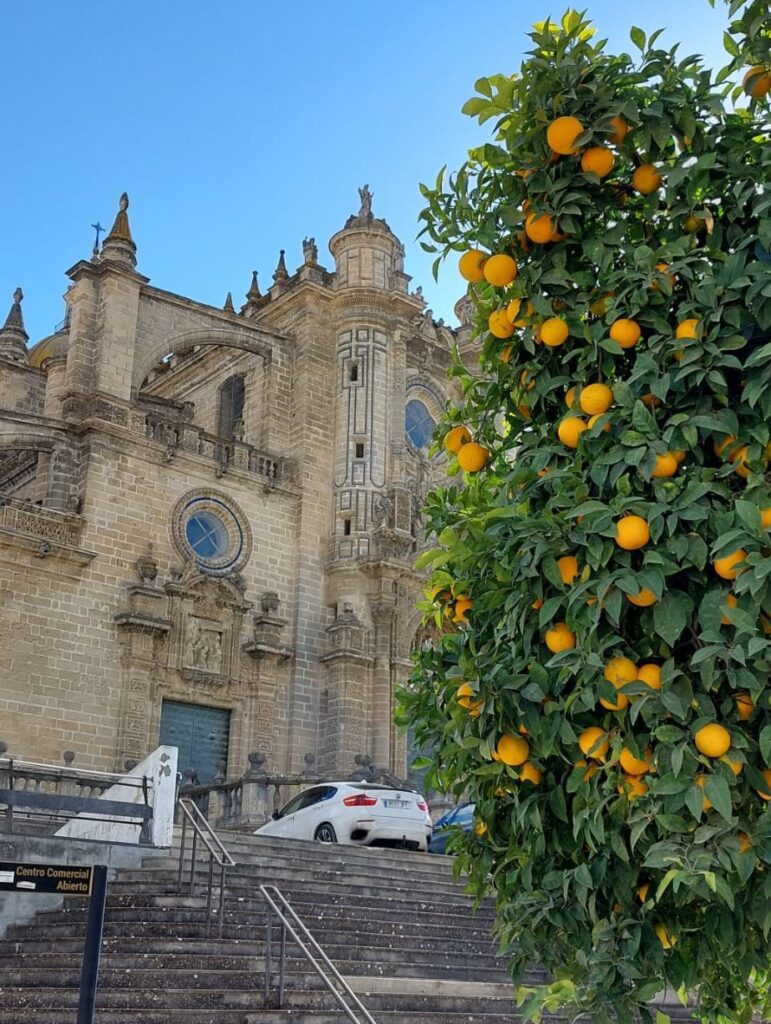Imagine strolling through the picturesque streets of Andalucia, where the air is perfumed with the fragrance of orange blossoms. Vibrant orange trees line cobblestone pathways, creating a postcard-perfect scene. But here’s the twist—these aren’t your breakfast oranges. These are bitter oranges, also known as Sevillana Oranges, a unique fruit with a fascinating story that has woven its way into the culture and history of southern Spain.
Spain is renowned for its citrus, boasting two main varieties: the sweet oranges of Valencia and the bitter oranges of Andalucia. While Valencia’s sweet oranges are celebrated for their juicy flavor, today, we are going to dive into the intriguing world of bitter oranges, also known as marmalade oranges or Seville oranges.


The question I most often hear is how did Spain become home to these magical trees?
How Bitter Oranges Came to Andalucia
The story of the bitter orange begins in South Asia, where it was first cultivated and received its name. The word “naranga” in Sanskrit and “nareng” in Farsi means “favored by elephants,” a nod to the fruit’s significance in the region. The scientific name aurantium is derived from the Latin word aurum, meaning gold, which refers to the fruit’s vibrant color (Dr. Hauschka).
But how did this citrus gem find its way to Spain? There are a few theories. One suggests that Persian traders brought a type of citrus to the Roman Empire, which they then spread to their colonies in North Africa and the Iberian Peninsula. Another theory credits Genoese sailors with introducing a distant relative of today’s bitter orange to the West. The bitter orange itself is a hybrid between a pomelo (grapefruit) and wild mandarin (sweet orange).
However, the most likely explanation is that the Moors brought the fruit to Spain in the 8th century. By the 10th century, the naranja amarga (bitter orange) had firmly established itself in Al-Andalus, as the region was then known. The Moors integrated orange trees into their towns and cities, using them to create lush courtyards and gardens designed to honor Allah and symbolize an earthly paradise.
Uses for the Bitter Orange
These trees weren’t just decorative; they had practical uses too. The Moors and Sephardic Jews dried the blossoms to make tea, a tradition that continues in Spain to this day. They also used the fruit in perfumes, oils, and cooking.
After the Reconquista, the Christian kingdoms carried on the tradition of cultivating bitter oranges. Spanish conquistadors even introduced the trees to the Americas, ensuring their place in history. The British, ever resourceful, turned the fruit into marmalade, a treat famously enjoyed by Queen Elizabeth herself (Wikipedia).
The Bitter Orange of Today
Fast forward to modern times, and bitter orange trees are a quintessential part of the Andalusian landscape. In many cities, these trees are protected by local governments. Tampering with or damaging them can result in fines.
Twice a year, the oranges are harvested and used for everything from marmalade to cosmetics. In Seville, a groundbreaking initiative is even turning these fruits into electricity, with plans to power water purification plants and, eventually, homes (somoselectricos).


The Bitter Orange tree has a rich history. Despite its appearance as a decorative ornament, it has witnessed much of Spain’s transition between civilizations, playing a key role in the development of Spanish culture, gastronomy, and now its energy.
Personal Take
The bitter orange is more than just a tree; it’s a symbol of Andalucia’s charm. Its blossoms fill the streets with an intoxicating aroma, and its vibrant fruit adds a splash of color to the region’s towns and cities. But my own experience with these fruits didn’t quite start out as a love affair.As a kid, my best friend and I would often wander the streets of our hometown, noticing the orange trees that seemed to dot every corner. One day, with a sense of adventurous spirit, we decided to climb one of these trees. We figured, “Why not? The fruit’s just hanging there—it’s free for everyone, right?”With dreams of sweet, juicy oranges, we reached for the fruit, only to be greeted with a sharp reminder that bitter orange trees come with thorns. We got scratched and bruised by the branches, but the real disappointment came when we finally tasted the fruit. It was awful—bitter, sour, and left an unbearable aftertaste in our mouths. We were expecting an orange as sweet as the ones you’d have at breakfast, but instead, we got a mouthful of regret.Despite that childhood mishap, the bitter orange has grown on me over the years, and today it’s a beloved symbol of the region. If you’re visiting, make sure to try some of my favorite bitter orange products:
- Bodega Gallardo Orange Liqueur Wine: Crafted in Vejer de la Frontera, this wine is a citrusy delight.
- Aguas de Sevilla Perfume: A timeless scent created for the 1992 Expo.
- Pancracio Chocolate: This artisanal chocolate from Cádiz offers a divine bitter orange and almond flavor.
- Apisierra Goods: Jaén-based artisanal treats featuring local ingredients.
- La Vieja Fábrica Marmalade: A classic marmalade made from Seville oranges.
On an international note, bitter oranges are the key ingredient in Cointreau and Grand Marnier. Cheers to that!

Another fan favorite is the delicious orange wine you can find in Sevilla. If you happen to find yourself in the city, you have to visit Taberna Álvaro Peregil La Goleta which is famous for its orange wines made from Moscatel and bitter orange skins.
Next time you find yourself in Andalucia, take a moment to appreciate these magical trees. Enjoy the fragrant scent of their blossoms, try a local bitter orange product, or visit a spot like Taberna Álvaro Peregil for a taste of orange wine.
If you’re interested in more fun historical facts and stories like these, why not join us for a private tour? I’ll take you through the enchanting streets of Andalucia, sharing fascinating tales and hidden gems along the way.
Have a favorite bitter orange product or recipe? Share it in the comments below—I’d love to hear your thoughts and experiences!








0 Comments